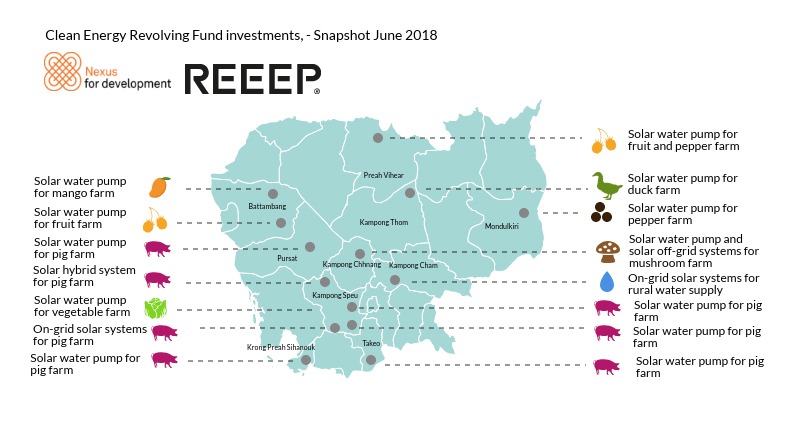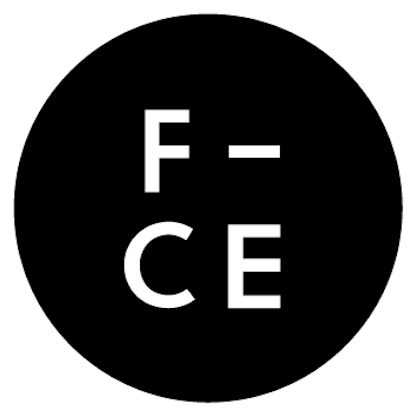Funding small-scale clean energy in Cambodia
A new fund is helping to bring clean energy to farmers in Cambodia as Olivia Coldrey from the Renewable Energy and Energy Efficiency Partnership (REEEP), Austria and Sarou Long, from Nexus for Development, Cambodia explain
Small-scale farmers in developing countries have much to gain from clean energy technology, but often lack the knowledge and finance to select and purchase solutions. A fund led by clean energy experts in Europe and on the ground in Cambodia is working to change this, explain Olivia Coldrey from the Renewable Energy and Energy Efficiency Partnership (REEEP), Austria and Sarou Long from Nexus for Development, Cambodia
Small and medium-sized farms make up a significant chunk of the Cambodian economy. They often struggle to compete economically with their peers in other countries partly because of the high cost and unreliability of their energy supply. Farmers are generally interested in integrating clean energy into their operations as a way of reducing business costs and improving productivity. Two important barriers, however, make this difficult. First, a lack of access to appropriate finance and second, low levels of knowledge of, and by extension trust in, clean energy technologies. Small-scale lending is challenging in any market, but particularly in Cambodia which relies mainly on community-based lending and micro-credit, with loan sizes too small to fund the purchase of clean energy technology suitable for farms. Meanwhile, the local banking sector is nascent and unfamiliar with renewable energy, making larger financial institutions conservative in their lending practices. To try to fill this gap, we have created the Clean Energy Revolving Fund (CERF), which provides affordably priced, unsecured loans to small and medium-sized agrifood businesses in Cambodia to enable them to purchase clean energy technologies. These are primarily solar powered water pumps and small on- and off-grid solar systems. The initiative was made possible thanks to seed funding from the Austrian Government and the US-based Blue Moon Fund. Phnom Penh-based Nexus for Development is the fund manager, while REEEP acts as a financing partner and strategic advisor.
CERF and the Sustainable Development Goals
We are using our experience of piloting CERF as an innovative financing instrument to answer important structural questions about the role of climate finance in helping to achieve United Nations Sustainable Development Goal 7. This is aimed at ensuring access to affordable, reliable, sustainable and modern energy for all. Some of the questions we have sought to address include:
- How can public funds be used most effectively to help commercial financiers identify, assess and manage their risks in funding clean energy projects
- How can project implementers help reduce high transactions costs in small projects to attract larger scale investment
- How can commercial financiers be incentivised to realise blended finance opportunities
Farm visits
Before any loan is made, the fund manager visits each farm and carries out intensive due diligence that no Cambodian bank or financial institution, including the state-sponsored Rural Development Bank, has proven willing to undertake. This is due partly to a lack of specialist capacity to assess loans for small-scale clean energy projects and also to the high cost of due diligence relative to loan sizes. In addition to a focus on affordability, CERF loans incorporate flexible repayment terms. These can match the energy payback period on technology purchased and incorporate repayment schedules that align with receipts from seasonal sales of agricultural produce. Loans fund up to 90% of technology costs with borrowers contributing the balance as equity. The first loan was made in 2016 and the CERF portfolio now includes 15 loans with an aggregate value of just over $255,000, leveraging clean energy projects valued at nearly $350,000. Loan amounts vary from $7000 to around $50,000, with the majority in the $10,000-15,000 range. Cumulatively, these loans have enabled the installation of 85.76 kilowatts of clean energy capacity, meaning that emissions of over 168 tonnes equivalent of carbon dioxide are avoided every year. To date more than 90 per cent of loan repayments have been made in full and on schedule. The discipline of undergoing a credit assessment and making repayments can help borrowers build a credit history and apply for commercial loans in the future. In addition to its financial innovation, CERF gives rise to numerous co-benefits that support Cambodia’s energy transition, such as helping the country meet its commitments under the Paris climate agreement. By funding the deployment of off-grid energy, the loans also improve energy access and security in rural communities where only a small proportion of businesses are connected to the grid. This in turn reinforces local agricultural infrastructure and food supply chains. Borrowers that invest in solar-powered irrigation systems are more resilient to the impacts of changing rainfall patterns, a direct result of climate change.  We will be truly successful when we fulfil our aim for the fund to be fully managed locally. To this end, we are working with a number of Cambodian financial institutions, especially rural credit operators, to help them serve the market at scale. This means transferring knowledge about due diligence processes for unsecured lending and raising awareness about the bankability of clean energy technologies and businesses. Ultimately, we hope local financial institutions will be able to provide appropriate finance to small and medium-sized agribusinesses and farmers. This would represent a transformational change in the financing of clean energy in Cambodia. We are also investigating how to adapt and replicate the CERF model in other countries within the Mekong region, including Myanmar and Laos, where the agricultural sector employs a sizeable proportion of the population, but where many farms are not grid connected. With the right policy settings, finance and know-how, these conditions are ideal for accelerated clean energy deployment.
We will be truly successful when we fulfil our aim for the fund to be fully managed locally. To this end, we are working with a number of Cambodian financial institutions, especially rural credit operators, to help them serve the market at scale. This means transferring knowledge about due diligence processes for unsecured lending and raising awareness about the bankability of clean energy technologies and businesses. Ultimately, we hope local financial institutions will be able to provide appropriate finance to small and medium-sized agribusinesses and farmers. This would represent a transformational change in the financing of clean energy in Cambodia. We are also investigating how to adapt and replicate the CERF model in other countries within the Mekong region, including Myanmar and Laos, where the agricultural sector employs a sizeable proportion of the population, but where many farms are not grid connected. With the right policy settings, finance and know-how, these conditions are ideal for accelerated clean energy deployment.
Photo: Jeremy Meek for REEEP
Do you have a thoughtful response to the opinion expressed here? Do you have an opinion regarding an aspect of the global energy transition you would like to share with other FORESIGHT readers? If so, please send a short pitch of 200 words and a sentence explaining why you are the right person to deliver this opinion to opinion@foresightdk.com.
